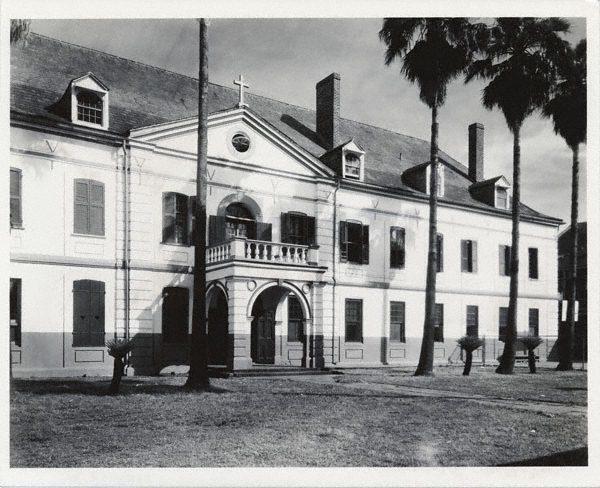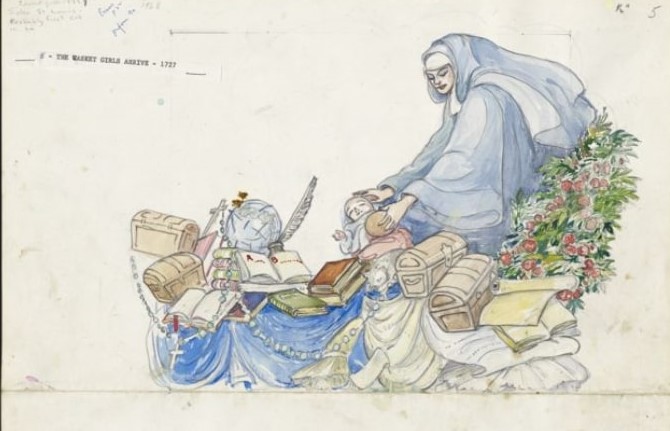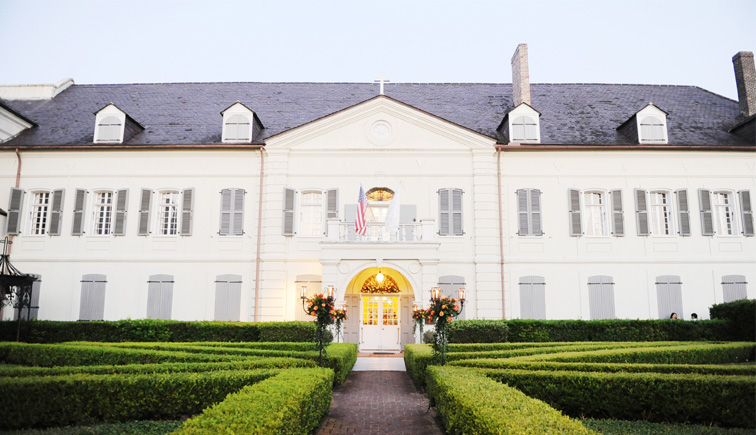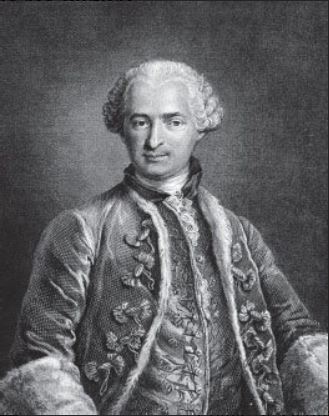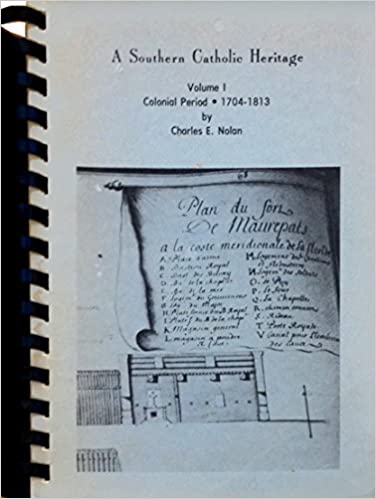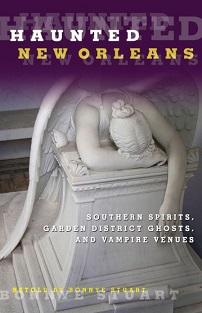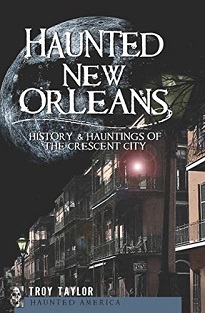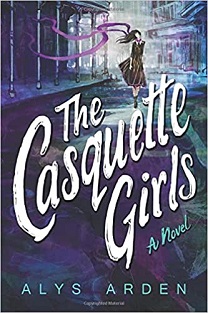LIBRARY BLOG
Vampires in the Deep South
or just New Orleans, really
The Casket Girls and the Ursuline Convent
We all know that vampires hail from Transylvania beginning with Vlad the Impaler, but what are the origins of the American vampire? The legend starts with France, surprisingly, back when Louisiana was a budding settlement.
Founded in 1535 Italy, the Company of St. Ursula grew to have missions scattered around the globe. One of these missions was in New Orleans. A group of Ursuline nuns settled in the Crescent City in 1727 with the intent to be teachers and nurses. Their convent is still standing today on Chartres Street.
The Ursuline mission in New Orleans became famous for the housing and educational work they did for the swamp-land community, but they’re uniquely separated from other cloisters because of the legend of the Casket Girls.
A section of the old Ursuline Convent on Chartres Street.
Photo from Louisiana Digital Library
New Orleans hit a rough time, as New Orleans tends to do. The men of the new city needed eligible women to marry so the population could grow. That was the whole point of France sending settlers to the area. The problem was, early New Orleans women weren’t deemed eligible enough, being too loose, too Choctaw, too African, or too I’ve-taken-a-vow-of-chastity-sir-please-leave-me-alone to make good mothers. (They were just too picky.) The king of France at the time declared that he would send young women to the colony, where they would be educated at the Ursuline Convent and made into worthy wives and mothers. It’s historical truth that France supplied young women to New Orleans for that purpose, and they were, in fact, taught and housed at the Ursuline Convent. However, legend has it that one group of girls brought over something new and unexpected to the Big Easy.
A float design based off the legend of the Casket Girls from the Mistick Krewe of Comus 1968 parade. The caskets, or trunks, are an integral part of the design.
Photo from Tulane University Library
They were called “Casket Girls” (or “casquette/cassette girls”) because they were only allowed to bring with them what fit in a trunk called a cassette or casket. Mind you, this was before “casket” took on the meaning it has today. In this time, it simply meant a trunk or chest, not a coffin. In some versions of the story, the girls were orphans or other lower-class or impoverished citizens; in others, the girls were daughters of well-to-do French citizens whose cassettes contained their doweries. The batch of girls in question were different from their peers. They were deathly pale, gaunt and malnourished, likely sickly from the poor conditions during the boat ride to their new home. The ones who survived the journey resided in the convent where they were nursed back to health educated by the nuns until husbands were found for them. Whichever version, one detail remains the same: they smuggled vampires to New Orleans, knowingly or not.
In some tales, it was warned that the cassettes never be opened until the girls married, so they were stored in the attic. In others, the cassettes were opened to reveal they were empty. Legend took over that vampires wanted to branch out from the Old World, either to raise their numbers or because it was growing difficult to hide themselves in the Old World. Some versions of the tale say that the young girls among them, pale and forever children, pretended to be suitable wives for New Orleanian men. They slept in the caskets brought with them during the day and prowled for victims at night. Others posit that any vampire wanting to go to America hid in the later empty cassettes during the boat ride, effectively being smuggled into America, the first vampires in the New World.
The old Ursuline Convent still stands and operates today as a museum on Chartres Street, and rumor has it that the caskets are still housed in the attic, the Casket Girls still living (or residing, rather) there, running amuck at night, and making sure the attic shutters are tightly shut by daybreak.
The Ursuline Convent today. If you look at the roof, you can see the infamous attic shutters.
Photo from St. Louis Cathedral
For a more in-depth look at one of my personal favorite legends, read their section in New Orleans Vampires by Marita Crandle.
Le Comte de St. Germain
Jacques St. Germain
Photo from New Orleans Vampires by Marita Crandle
Brad Pitt and his nice hair in the movie adaptation of Interview with the Vampire isn’t the only infamous vampire to come out of New Orleans. As a hub of vamp-related lore since the Casket Girls, New Orleans has its fair share of Dracula’s brethren. And who knows, I might be related to this one.
After the French and vampiric Casket Girls made their way to LA, another vampire would have his time in the New Orleans legendary limelight. The Comte de St. Germain, or Count St. Germain, has disputed origins. No one knows where he’s from or exactly when he was born, but it’s said that the socialite lived for 2,000 years. Some of this time might’ve been in New Orleans under the moniker of Jacques St. Germain.
Now, I honestly can’t tell if the myth of the Count St. Germain/Jacques St. Germain is based on a real person or not. All my research concluded with a big ole inconclusive stamped over it. However, his contemporaries (if this was a real man) included King Frederick the Great of Prussia, a skeptic in the supernatural, who claimed in the 1870s that the Count St. Germain was “the man who could not die”*. His eccentricities and high-up friendships don’t stop there.
The Count was a self-professed master of alchemy, and claimed that he had access to a substance that made him live indefinitely. Whispers of his alchemical skills led to a rumor that he could turn basic metals into gold, and another rumor says he took the imperfections out of one of King Louis XV’s royal gems. People across the royal courts of Europe claim that he predicted the invention of the steamboat, which would first be built in the next century over, and that he suggested that he would play a role in its creation. His knowledge of historical events and timelines were that of someone who lived through it—even though some of the events he spoke of happened hundreds of years before his peers were born.
Anyhow, the Count St. Germain didn’t stay in one place for too long. Before his last and final death (maybe) he (possibly) ended up in New Orleans around the early 1900s, where his legend would flourish and later become the inspiration for Anne Rice’s character Louis in Interview with the Vampire. There was talk around the French Quarter about the man who said he was a direct descendant of the Comte du St. Germain and a former assistant to King Louis XV. Observant New Orleanians thought his proclaimed origins were dubious, but agreed that he had an uncanny resemblance to his supposed predecessor. He had introduced himself as Jacques St. Germain and lived at 1039 Royal Street. He threw lavish parties, but never ate any of the refreshments he had catered. Instead, he would sit back and drink what appeared to be red wine from an ornate chalice and relished the partygoers’ enjoyment. And, like his predecessor, Jacques would regale those who would listen with tales of his travels and stories of historical events in such fine detail people would think he must have been there himself.
Crandle posits that this was Jacques St. Germain’s Royal Street residence.
Photo from New Orleans Vampires by Marita Crandle
It was at one of his highly-anticipated parties that a rather strange occurrence unfolded. In 1903, a woman attended one of his very classy ragers and ended up flinging herself from his balcony. Injured, possibly drunk, and definitely terrified, she rambled on about how she was attacked by a vampire—St. Germain—who had bitten her neck. Authorities were called to investigate the party and bystanders tended to the woman’s injuries. Thinking the woman, a rumored prostitute, was delusional from her drunkenness and confident that there was a reasonable explanation, the police officers didn’t want to bother the esteemed St. Germain with questions at such a late hour. It was agreed that St. Germain would visit police station in the morning for the gambit of routine questions. But St. Germain never showed up the next day. In fact, he vanished entirely overnight, leaving most of his belongings in his Royal Street residence. Story goes that when police broke into his home to search for evidence in lieu of questioning, they found a collection of opened wine bottles containing—you guessed it—human blood.
The stories of the Comte du St. Germain and Jacques St. Germain eerily parallel each other. Perhaps it was true that Jacques was a predecessor of the well-liked Comte du St. Germain. Or, just maybe, the Comte lived under the cover of Jacques in Louisiana before disappearing into the night in 1903. Did he exist? Or did several noble and royal citizens of Europe cook up some very unbelievable lies at the risk of losing their reputation? And where, if St. Germain is still alive, is he now?
For a more in-depth look at this truly baffling legend, read his section in New Orleans Vampires by Marita Crandle.
The Lack of Houman Vampires
All this talk about New Orleans being home to the American vampire, but nothing about any Houma-based creatures of the sort. The hard truth is that there are no vampire legends out of Houma even though vampires and vampire-like myths are found in every culture under an array of names. So, applications have been opened to become Houma’s very first (documented, at least) vampire legend. See if you have the chops to fill this glaring vacancy today** .
* Real Vampires, Night Stalkers, and Creatures from the Darkside by Brad Steiger, page 27
** Be warned that the writer of this article may possibly be related to Le Comte de St. Germain and/or one of the Casket Girls, and the law of nepotism states that she is a lovely running candidate to become (or may possibly already be) Houma’s documented first vampire. She encourages you to still fill out an application, though.
Thumbnail photo is from Louisiana Digital Library
Pulled From
Further Reading on the Casket Girls, St. Germain, and Other Louisiana Vampires
Fiction Books Based on or Inspired by the Casket Girls
Fiction Books Based on or Inspired by Le Comte de St. Germain

-Lillian LeCompte, Reference Department

